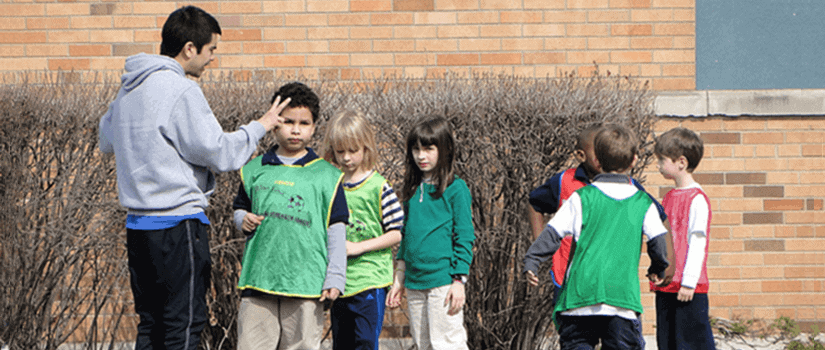
New Vision and Objectives
On 26th January, the Department for Education announced the amended vision statement and objectives for Primary PE and School Sport Premium. The Premium is a government fund, which provides money directly to the head teachers of primary schools, with the intention of helping the school improve the quality of PE and sport activities offered to pupils. The new version has condensed the expected outcomes, having taken into account the advice presented by key organisations such as the Youth Sport Trust. The amended version now states:
VISION: All pupils upon leaving primary school should be physically literate and with the knowledge, skills and motivation necessary to equip them for a healthy lifestyle and lifelong participation in physical activity and sport.
OBJECTIVE: To achieve self-sustaining improvement in the quality of PE and sport in primary schools.
Indicators of such improvement to include:
- The engagement of all pupils in regular physical activity – kick-starting healthy active lifestyles
- The profile of PE and sport being raised across the school as a tool for whole school improvement
- Increased confidence, knowledge and skills of all staff in teaching PE and sport
- Broader experience of a range of sports and activities offered to all pupils
- Increased participation in competitive sport
This is a departure from the previous version, which emphasised the influence of the 2012 Olympics and listed multiple objectives:
VISION: A measurable and sustained improvement in school PE and sport, underpinned by high-quality teaching that increases participation levels in physical activity, and leads to healthier pupils who are more engaged across the whole curriculum. This will be our legacy to the London 2012 Olympic and Paralympic Games.
OBJECTIVES:
- To improve the quality of existing PE teaching through the continuing professional development in PE for generalists, so that all primary pupils improve their health, skills and physical literacy, and have broader exposure to a range of sports.
- To increase participation levels in competitive sport and healthy activity of pupils, and maintain these into adolescence.
- To increase the quality of initial teacher training in PE and sport, and to promote PE specialisation in primary level workforce.
- Schools understand and value the benefits of high quality PE and sport, including its use as tool for whole school improvement.
What These Changes Mean
The previous vision had a clear concentration on improving the situation, taking inspiration from the London 2012 Olympics and Paralympics in order to enact necessary change. In comparison, the revised vision reads as a more long-term view for a fitter and healthier future society. The new key phrase appears to be self-sustaining, with the listed indicators suggesting various general pointers that will guide young individuals into a lifetime of better health and levels of fitness.
The first indicator highlights the importance of getting students into a routine of physical activity at a young age. Habits are difficult to break, and studies have shown that starting a habit of regular exercise at a young age brings a higher probability that an individual will remain healthy in adult life. On the opposite end of the spectrum, overweight inactive children are far more likely to grow up to become overweight inactive adults (Cunningham, Kramer & Narayan, 2014). Developing a healthy and active lifestyle at the start of life is therefore essential in combating inactivity and obesity in the population.
A key element in encouraging health and fitness amongst the younger generation is offering a wider range of sports and physical activities in school. Girls especially can have difficulty finding activities that hold their interest. A report by the Women’s Sport and Fitness Foundation (2012) found that many girls held a negative view of school sport and P.E, due to many of the activities on offer being ‘unfeminine’. The girls interviewed did not lack a desire to take part in sport, and responded that they wanted to be active and stay healthy. However, they did not feel that the type of opportunities on offer were right for them. This led to lower levels of participation, and a lack of motivation to continue with sports at a later stage. A greater choice of activities would go a long way in improving the rate of participation.
Increased involvement in competition, both personal and in team sports, has been advocated by many as a necessary component in physical education and the overall development of students. A report by Ofsted (2014) highlighted the importance of allowing young people the chance to take part in competition in order to prepare them for adult life. The report noted the relationship between high standards of sport in a school and the similarly high expectations of pupils in the classroom. The top independent and state schools in the UK recognise this link and use sporting achievements to cultivate an environment in which their students are encouraged excel. The motivation and skills that pupils develop in order to compete on the playing field transfer well to academic work. Furthermore, raising the profile of P.E and sport across the school helps to energise the whole school and create a sense of community.
References
- Cunningham, S.A., Kramer, M.R., Narayan, K.M.V. (2014) Incidence of Childhood Obesity in the United States. The New England Journal of Medicine, 370(5)403:411. Available at: https://www.nejm.org/doi/full/10.1056/NEJMoa1309753 [Accessed February 2nd 2015].
- Ofsted (2014) Competitive school sport: going the extra mile. Available at: https://www.gov.uk/government/publications/going-the-extra-mile-excellence-in-competitive-school-sport[Accessed February 2nd 2015].
- Women’s Sport and Fitness Foundation (2012) Changing The Game For Girls. Available at: https://www.sportsthinktank.com/uploads/wsff-and-yst-changing-the-game-for-girls-january-2011-14.pdf [Accessed February 2nd 2015].
Photo: Adam Jones


Responses